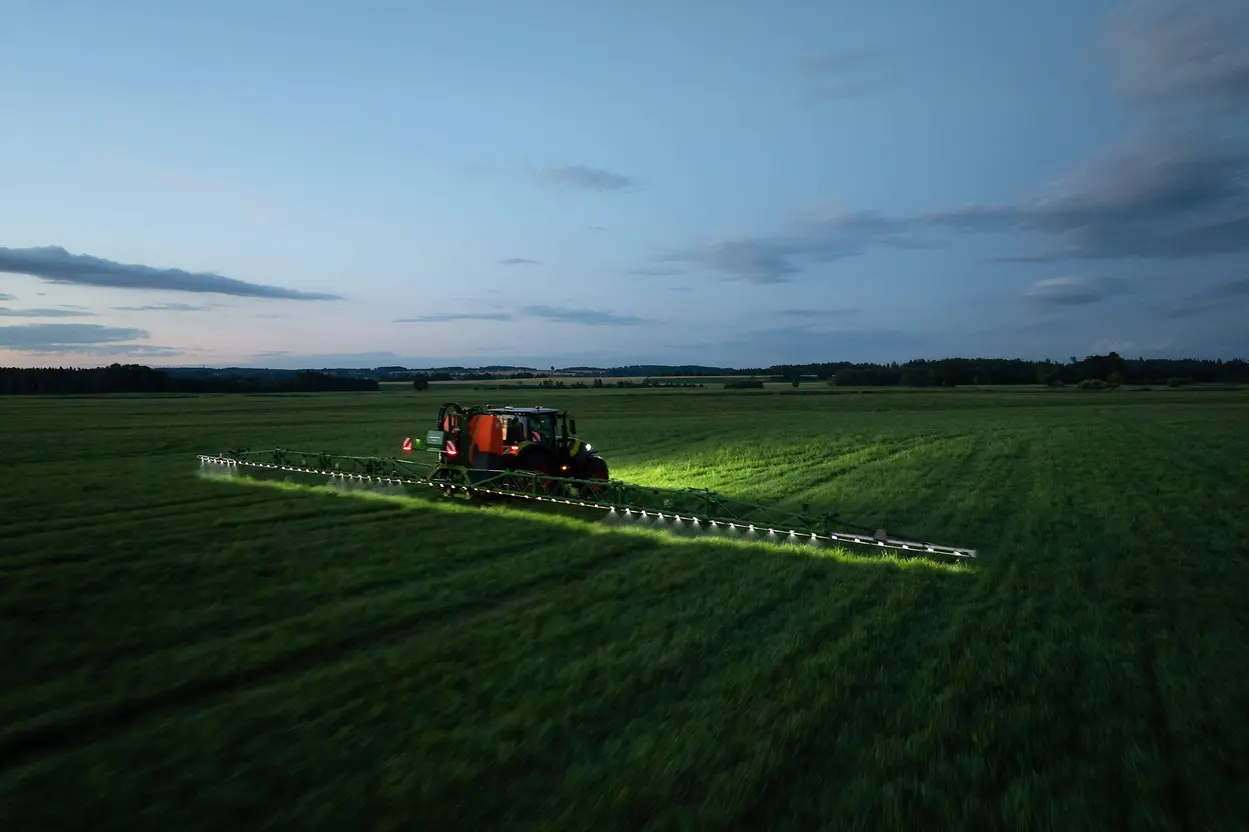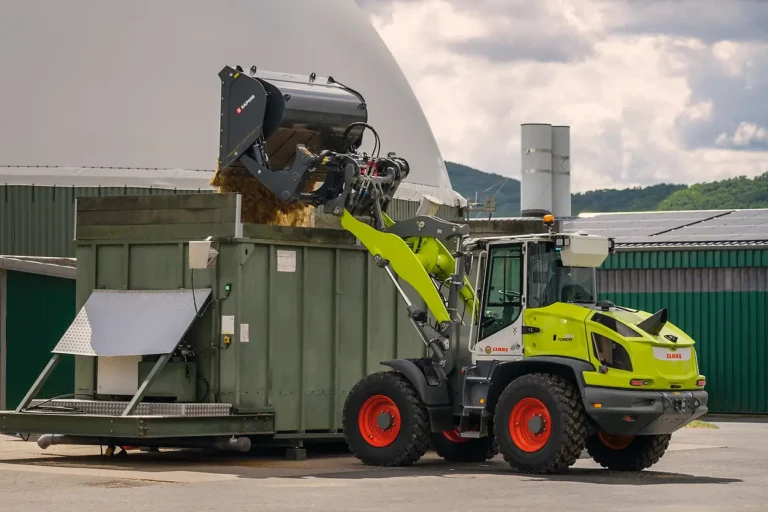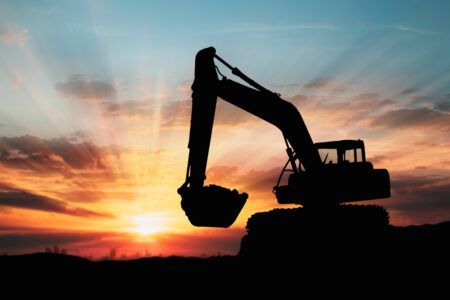Claas will present the first autonomous wheel loader for agricultural use at Agritechnica 2025.
In view of the increasing shortage of skilled labour, the fully autonomous Torion has been designed to handle repetitive and monotonous wheel loader tasks without an operator. Operators can pre-plan the autonomous use of the machine via Claas connect, whereby the system works intuitively and requires only a few inputs for flexible work orders.
Developed jointly with Liebherr, the Torion Autonomy connect uses LiDAR sensors to record its environment and automatically creates a digital twin of the work area to plan the work cycle. Separate surveying technology is not required. Thanks to advanced AI technology, route finding and material pick-up are fully automated using a so-called pile analysis, without the need to plan static routes in advance.
As a result, Claas Autonomous Silage Management can choose the most efficient route for each journey. The autonomous system carries out jobs independently, adapts to changes in the environment and does not require a GPS receiver, which makes it easy to use in buildings or under rows of trees. The Torion can be operated both fully autonomously and manually, which offers a high degree of flexibility for multifunctional applications.
In addition to this first for the agricultural sector, Claas will bring a host of technological solutions for agriculture in the innovation area of its stand (Hall 13, Stand C18). The OEM says its focus will be on machines and exhibits that redefine efficiency, sustainability and precision in agricultural practice through the use of artificial intelligence (AI) and autonomous systems.
Together with Amazone, Claas has developed the Weed Detector which enables pinpoint dock control on grassland based on infestation maps. Until now, selective treatment of dock – the only measure permitted in some regions following the ban on area spraying – was only possible mechanically or with a complex and expensive spot application technique specialising in dock in working widths of up to 9 metres. As the extent of the infestation and the exact location of the target areas are not known with these methods, it is not possible to calculate the required application rate in advance or plan an efficient treatment route. In addition, the entire area must be travelled over, although often only partial areas are affected.
Weed Detector is a practical solution for detecting and localising harmful plants in grassland directly during mowing. AI-supported software recognises dock plants using two Claas Culti Cam cameras on the front mower. The detected dock leaves are immediately transmitted to CLAAS connect as geo-referenced target areas and created there as an infestation map. Data from several cutting edges can be taken into account and merged.

In the next step, this infestation map is transferred to myAmazone operations via the AgIN interface (AEF), i.e. cloud-to-cloud. Depending on the existing spraying technology, the required application rates for the control measure are calculated in advance.
Finally, the spot application map is transferred to the crop sprayer and the dock is selectively controlled with maximum efficiency. With this solution, Claas offers a further step towards process-optimized and resource-saving grassland management.
During mowing, the dock plants are detected by two Claas Culti Cam cameras on the forage mower. After AI-based evaluation of the data and the creation of infestation maps, dock control is carried out at a later stage using spot spraying with an Amazone crop sprayer.
Dynamic Field Scout, developed in collaboration with Kiel University of Applied Sciences and AgXeed, demonstrates how automated field surveys using remote sensing and RTK technology in conjunction with artificial intelligence are revolutionising precise field mapping.
Based on optical area information, the system automatically creates exact field boundaries and uses AI-based image analysis to recognise obstacles such as trees or water holes, which are transferred directly to the Farm Management Information System (FMIS) and steering system in use. This creates up-to-date, precise route and lane planning for both autonomous and manned machines. A crucial building block for the agriculture of tomorrow.
Together with AgXeed and Amazone, Claas is presenting a visionary concept that combines autonomous field work, such as sowing, with digital logistics planning. The approach developed within the 3A Group stands for holistic automation of agricultural processes in which autonomous machines, implements and logistics systems are digitally networked with each other.
The aim is to plan, coordinate and dynamically control the entire process chain, such as sowing, fertilisation or crop protection application in advance, i.e. with continuous and automatic adaptation to variable influencing factors. This results in adaptive, just-in-time organised processes in which machines, operating resources and personnel are available exactly when and where they are needed. The core is interoperable communication between digital platforms such as Claas connect and myAmazone operations, which is standardised by the AEF Agricultural Interoperability Network (AgIN). The 3A Group’s concept illustrates how autonomous and highly automated systems can be combined to create an efficient overall solution for operational processes.
Images: Claas





